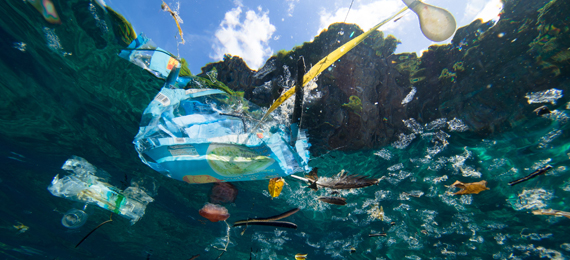
What Is the Great Pacific Garbage Patch
The Great Pacific Garbage Patch (GPGP) is a large accumulation of marine debris in the Central North Pacific Ocean. The plastic debris from all large water bodies is broken down into tiny particles and moves with ocean currents’ governance. The gyre is divided into two parts, “Eastern Garbage Patch” located between Hawaii and California, and “Western Garbage Patch” located between the East of Japan to the Hawaiian Islands. The exact geographic location of the Great Pacific Garbage Patch is 135° W to 155° W and 35°N to 42°N. The Garbage Patch has increased 10 fold since 1945, which happens because most plastic materials are not biodegradable. Instead, they break into smaller pieces.
Why Is the Great Pacific Garbage Patch a Problem
Marine Debris’s accumulation arrested Algae and Plankton’s growth, which accounts for photosynthesis and production of the marine food web, where it uses sunlight to produce nutrients. The entire marine ecosystem is affected by the accumulation of Marine Debris.
The waste deposited on the ocean floor and other large water bodies do not degrade; instead, it floats for a few centimeters and meters underneath, which is not visible to boats and birds. The birds instead feed on the plastic debris and eventually die.
When Was the Great Pacific Garbage Patch Discovered
- A. 1945
- B. 1954
- C. 1977
- D. 1985
The turtles that feed on jellyfish misunderstand the plastic covers and other floats as jellyfish. The garbage patch accumulates for about 1.6 million sq km, and some of the deposits are over 50 years old. The accumulation of garbage collapses the enter ecosystem.
Pacific Trash Vortex Facts
- Over 60% of plastics produced weigh less than seawater.
- There are about 70kgs of plastic for each Square kilometer of the seafloor.
- The Garbage Patch is not visible from the satellite because of the Microplastics.
- 46% of the floating garbage consists of inexpensive and low-quality fishing nets.
- 8% of the garbage contains microplastics that are smaller than an eraser.
- On average, an entire garbage truck is being emptied into large water bodies every minute.
- It would take about 67 ships to clean throughout a year to only exactly 1% of the Giant Pacific Garbage Patch.
- 80% of the waste is deposited from land-based sources, and 20% is deposited from boats and ships.
- Plenty of fishes each year get trapped into forgotten nets from the garbage patch and fall prey to Ghost fishing.
- Charles Moore first discovered the patch in 1977.